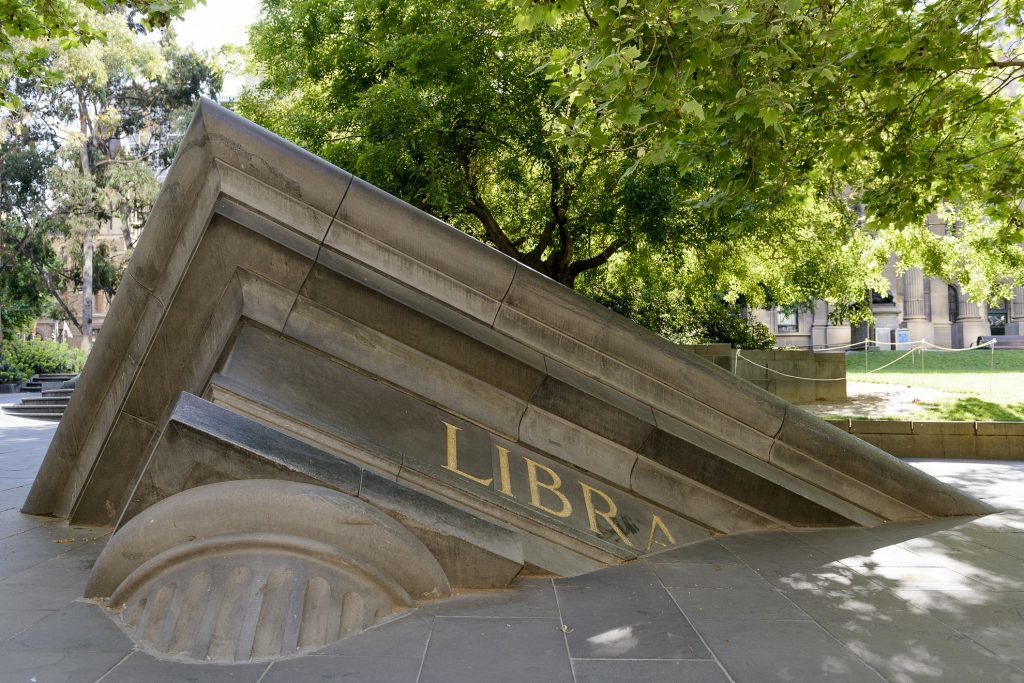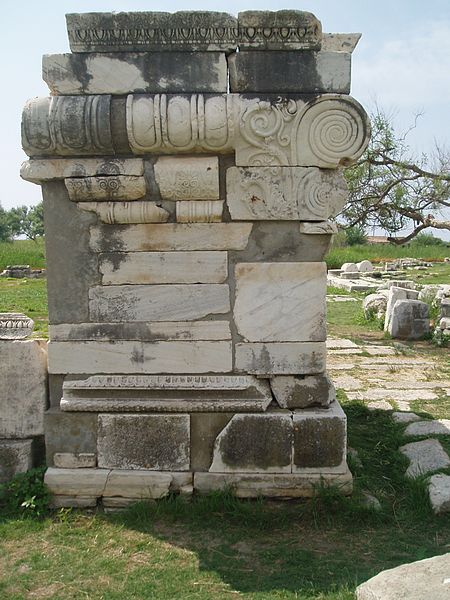
Key Themes: Architectural History; Mathematics in Art
Inquiry Questions:
- What does it look like has happened here?
- Where else might you see just a fragment or piece of something on display?
- Do you think that this is art or architecture? What are your reasons?
- Architectural Fragment turns architecture of the State Library of Victoria (SLV) into sculpture. What is another creative way that you can think of to turn a building into an artwork? Consider colour, form, materials and techniques.
Architectural Fragment relates to its environment in two significant ways. Firstly, it is sculpted from basalt (bluestone) which is the same stone that many of Melbourne’s streets are paved in and its buildings constructed. Secondly, the form of the sculpture mimics the Victorian period architecture of the SLV. It also features the half buried word ‘Library’ in gold leaf, which helps to make the visual connection stronger.
As the artist stated:
“I chose bluestone because this stone was so representative of Melbourne. All the paving had been made with it, as had the whole of the forecourt of the art precinct. Although an important stone in central Melbourne, to my knowledge no artwork had been made from it.”
Spronk was inspired after visiting the Greek Island of Samos, where the philosopher and mathematician Pythagoras was born. The artist saw architectural fragments “lying around in abundance, like a free sculpture park”. This travel experience contributed to the sculpture in two ways. Firstly, the architectural appearance and title of the sculpture reference the relics of ancient Grecian buildings that the artist saw in Samos, and secondly, the sculpture’s triangular form is a three-dimensional Pythagorean triangle, in reference to the Pythagoras’ theorem.
This mathematical reference relates directly to the fact that geometric and volumetric calculations are of central importance to public sculptures and architecture. Both buildings and public artworks rely heavily on mathematically accurate plans to result in safely engineered finished sculptures.
